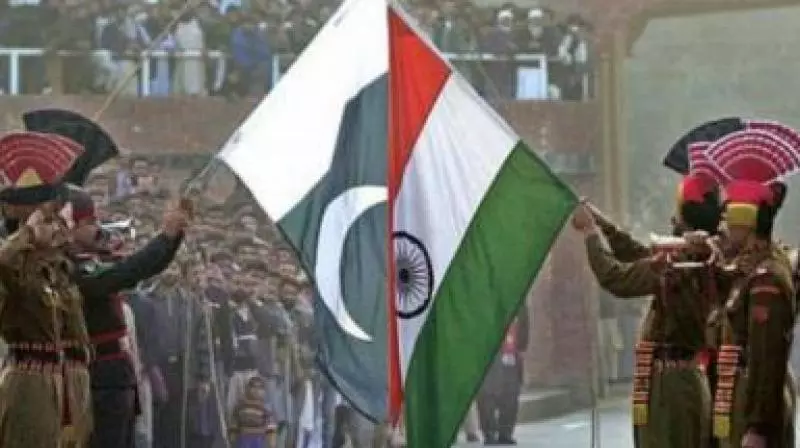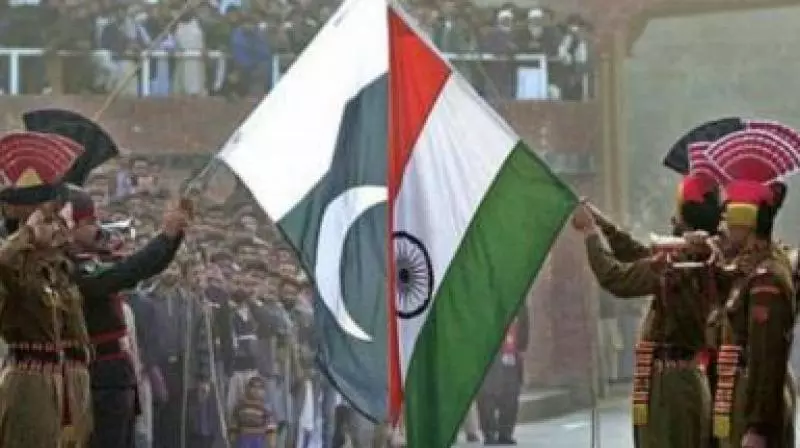
The recent terror attacks in Jammu have once again focussed attention on the fraught nature of the Indo-Pakistan relationship that is weighed down by the corrosive legacy of Partition and four wars, namely 1947, 1965, 1971 and 1999, respectively. Cross-border terrorism sponsored by Pakistan since the late 1970s, first in Punjab, then Jammu and Kashmir and later across India, is the albatross around the neck of the relationship.
On the other hand, Pakistan accuses India of interference in Balochistan — an allegation that it has failed to substantiate with any degree of credibility or conviction. This piece explores the journey of Indo-Pak relations, highlighting significant events that have shaped the fragile ties between these two neighboring nations in the past four decades.
Rajiv Gandhi and Benazir Bhutto (1989): The late 1980s witnessed a notable yet transient phase in Indo-Pak relations, marked by diplomatic engagements between Indian Prime Minister Rajiv Gandhi and Pakistani Prime Minister Benazir Bhutto. Their efforts, while well-intentioned, were overshadowed by deep-rooted mistrust and rising violence sponsored by Pakistan in Jammu and Kashmir. The period saw a resurgence of militancy in the vale of Kashmir, with Pakistan providing support to separatists that strained the bilateral dialogue and effectively stopped the conversations around demilitarisation of Siachen Glacier and the Sir Creek issue that were considered to be low hanging fruit within the realm of resolution then.
The Gujral Doctrine (1998): In 1998, Prime Minister I.K. Gujral introduced a bold vision for South Asia through the Gujral Doctrine, advocating non-reciprocal concessions to foster regional harmony. This approach aimed to build trust and cooperation, even with Pakistan. However, the geopolitical landscape of South Asia was altered with the two nations India and Pakistan conducting nuclear tests. These tests established both nations as de facto nuclear powers, introduced a new dimension of strategic stability and instability, underpinned by the doctrine of nuclear deterrence that is predicated upon the theological concept of Mutually Assured Destruction (MAD)
Post-Nuclear Tests and Kargil Conflict (1999): The nuclear tests of 1998 led to a shaky balance of power which was soon disrupted by the Kargil conflict in 1999. Pakistani troops and militants infiltrated Indian territory in the Kargil sector, leading to an intense conflict. The conflict ended with India regaining its territory, but it exposed the inherent risks of conventional warfare under a nuclear overhang.
Strained Relations during Atal Behari Vajpayee’s Tenure (2001-2002): Prime Minister Atal Behari Vajpayee’s tenure was marked by oscillations between peace initiatives and heightened tensions. The Lahore Summit of 1999, where Vajpayee famously took a bus to Lahore to meet his counterpart Nawaz Sharif, was a high point, symbolising a commitment to dialogue. However, the optimism was short-lived, owing to the Kargil conflict and the 2001 attack on the Indian Parliament by Pakistan-based militants-initiated Operation Parakram, a massive military mobilisation that brought the two nations on the brink of a war. This period highlighted the fragile nature of peace efforts, easily shattered by acts of terrorism and the underlying mistrust.
Ceasefire and Relative Peace, the Four-Point Formula during the Dr Manmohan Singh Years (2003-2008): A glimmer of hope appeared again in 2003 with the formal ceasefire agreement along the Line of Control (LoC). Both countries saw a relative reduction in hostilities and a series of confidence-building measures, including the resumption of cricketing ties and bus services between the two countries. An active back channel dialogue that commenced during the Vajpayee premiership was continued with an energised vigour during this period. Again, this fragile peace was violently disrupted by the 26/11 Mumbai attacks in 2008, where terrorists from Pakistan orchestrated a devastating assault on India’s financial capital. The attacks not only left a deep scar but also highlighted the persistent threat of terrorism and the immense challenges in fostering lasting peace.
Manmohan Singh and Nawaz Sharif (2008-2014): In the aftermath of the Mumbai attacks, bilateral relations remained strained, with a significant trust deficit.. The election of Nawaz Sharif in 2013 brought a brief resurgence of optimism. Both leaders met on the sidelines of international summits expressing a mutual desire to improve relations. However, repeated ceasefire violations and the propensity of the deep state in Pakistan not to eschew terrorism as an instrument of state policy hindered any further advancement.
Narendra Modi and the Current Scenario (2014-Present): The advent of Narendra Modi as Prime Minister in 2014 marked a new phase in Indo-Pak relations. Mr Modi’s approach combined initial overtures of goodwill with an asymmetrical response to security challenges. His visit to Lahore in 2015 to meet Nawaz Sharif was a notable gesture, but subsequent terror attacks, including those on the Pathankot airbase and the Uri military camp in 2016, led to a significant hardening of India’s stance. The actions across the LoC in response to these attacks signalled a new approach to taking political ownership of coercive actions.
In February 2019, a suicide bombing in Pulwama in Jammu and Kashmir killed around 40 Indian paramilitary personnel, leading to Indian airstrikes on a terrorist training camp in Balakot, Pakistan. The subsequent aerial engagement, resulting in the capture and release of an Indian pilot, emphasised on the persistent volatility and the risks of escalation in the absence of sustained dialogue.Today, Indo-Pak relations remain trapped in a cycle of sporadic engagements and prolonged periods of hostility. The Pulwama-Balakot dynamic demonstrated the portentous risk of unimpeded escalation in the absence of any institutional off-ramps. The underlying issues, primarily centred on terrorism from the Indian perspective and Jammu and Kashmir from the Pakistani standpoint, continue to impede substantial progress. As both nations grapple with domestic and international challenges, the hope for lasting peace remains elusive yet essential. A nuanced understanding of the historical context is crucial for envisioning a future where these two nuclear-armed neighbours might move towards a more stable relationship that can catalyse the progress and development of the South Asian region as a whole.
Despite the challenges, pursuit of peace should remain an essential goal. A historical perspective reveals that while progress has been slow and often reversible, understanding past efforts and failures can provide valuable insights for future diplomacy.
The terms and the attendant atmosphere for a dialogue are an essential sequitur for any forward movement. There, the onus is squarely on Pakistan for unless its deep state apparatus of terror is not culled or at least circumscribed, forward movement would remain only in the realm of hope.
Confidence-building measures, while beneficial, often prove to be temporary and fragile. Regional cooperation on economic and environmental fronts can serve as a foundation for broader peace initiatives, fostering interdependence and mutual benefits.
Ultimately, the path to a stable and peaceful coexistence will require both India and Pakistan to also understand the risk of escalation in a nuclearised environment without institutional off ramps as an ominous paradigm.
